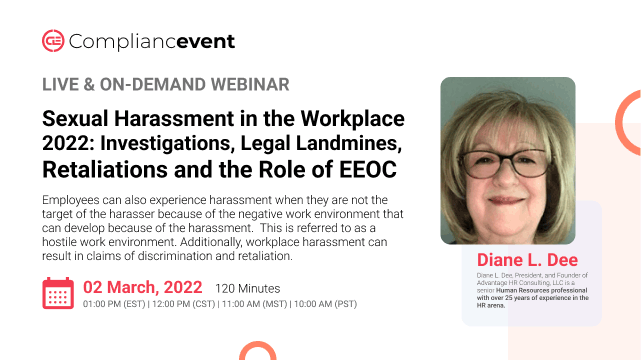- Topics
- Webinars
- Products & Services
Welcome To Biggest Online compliance Platform By LOCGFX Pvt. Ltd.
Human Resource & Payroll
While no employer wants to be accused of harassment, all employers need to be armed with the knowledge of how to proceed should they find themselves in the position of having to defend themselves against a harassment charge. Employers must ensure they are properly prepared at the outset of an investigation to conduct effective and legally-compliant investigations into the harassment.
Employers first need to understand exactly what harassment is: unwelcome conduct from a boss, coworker, group of coworkers, vendor, or customer whose actions, communication, or behavior mocks, demeans, puts down, disparages, or ridicules an employee. Physical assaults, threats, and intimidation are severe forms of harassment and bullying. Harassment may also include offensive jokes, name-calling, offensive nicknames, unsolicited images on a laptop, and offensive pictures or objects. Interfering with an employee’s ability to do his or her work also is considered a form of harassment.
Employees can also experience harassment when they are not the target of the harasser because of the negative work environment that can develop because of the harassment. This is referred to as a hostile work environment. Additionally, workplace harassment can result in claims of discrimination and retaliation.
Employers often overlook the importance of promptly investigating complaints of harassment and taking quick and appropriate corrective action. Since an employer’s prompt and effective response to complaints can limit or eliminate its liability in a discrimination, harassment, or retaliation lawsuit, it is imperative that employers implement an effective mechanism to investigate and resolve workplace complaints.
-What constitutes harassment in the workplace?
-What are the laws violated by harassment?
-What is a hostile work environment?
-What constitutes a valid retaliation claim?
-What is the role of the EEOC in the retaliation cases?
-What does retaliation involve?
-What are the legal requirements for a hostile work environment?
-What are the laws that provide protection from Discrimination?
-Definition of sexual harassment
-What harassment is NOT
-Employer/Employee responsibilities in preventing harassment
-Harassment prevention strategies
-Creating a harassment-free workplace
-Avoiding the legal landmines surrounding investigations
-Laws that influence investigations
-Making the decision to investigate
-Reviewing the complaint
-Gathering evidence
-Creating a successful roadmap to the investigation
-Understanding the perspectives of the Complainant and the Accused
-Conducting effective interviews
-Determining Witness credibility
-Creating a perception of fairness
-Developing documentation that will stand-up in a lawsuit
-Determining corrective actions
-Effectively handling the impact on employees: Addressing the rumors & questions in the aftermath of an investigation
-Taking appropriate action once a determination has been made
-Handling post-investigations issues
-Communicating investigation results with sensitivity and fairness
-Writing a court-ready final report
-Do’s & Don’ts of documenting employee performance
-Performance management’s role in preventing and resolving harassment
-Harassment & Discrimination are different than Retaliation
-Addressing retaliation
-Whistleblower protection/Sarbanes-Oxley Act
-Minimizing the likelihood of retaliation violations
-Elements of a retaliation claim
-Adverse employment action and causation
-Preventing retaliation and future workplace misconduct
-What creates workplace conflict?
-Major causes of conflict
-Viewing conflict as an opportunity
-Positive and negative outcomes of conflict
-Ability to identify different types of conflicts
-Conflict resolution styles
-Steps to take to resolve conflict
-Defining discrimination
-Characteristics of Discrimination
-Identifying hostile work environments
-Handling hostile work environment situations
From fact-finding to conducting interviews and writing reports, participants will gain the knowledge needed to recognize harassment in their workplace and confidently and effectively conduct investigations.
-Senior Leadership
-Human Resource Directors
-Human Resources Managers
-Human Resources Representatives
-Operations Professionals
-Managers & Supervisors
-Employees

Diane holds a Master Certificate in Human Resources from Cornell University’s School of Industrial and Labor Relations and has attained SPHR, SHRM-SCP, sHRBP, and HRPM® certification.
Diane is a member of the National Association of Women Business Owners and the Society for Human Resource Management. Additionally, Diane performs pro bono work through the Taproot Foundation, assisting non-profit clients by integrating their Human Resources goals with their corporate strategies.
Compliancevent Webinar Certification - Compliancevent rewards you with Compliancevent Achievement Certification for unlocking and attending this webinar. It is to acknowledge your participation in this training session and to add more to your professional score.
Compliancevent Courses and Webinars or any Education published "Articles & Materials" strictly follows the standards and guidelines of the Professional Credit / CEU Providers and Well Researched before publishment.
Compliancevent doesn't support any Fake - News, Articles, or Compliance updates; Our Industry Experts are highly verified and recognized, and their Pre-publishment is verified via our experts and fact-checkers.
Sign up now on compliancevent.net. Visit compliancevent.net/webinar to discover a wide range of webinars from industry specialists. Tick on either ‘live webinar’ or ‘on-demand’, and simply click on ‘buy now’ to get enrolled.
You can refer compliancevent to anyone in your social circle. Explore your industry with your colleagues by getting them signed up on compliancevent.net today!
Go for the topic of your keen interest on compliancevent.net. Tick on ‘live webinar’ and get enrolled! Easy registration, transparent transaction.
You can request for an on-demand webinar that records the live webinar for you. After the webinar ends, you will have full access to the webinar’s recording. You can also explore compliancevent offline to order your webinar DVDs, flash drives and transcripts.
If you can’t attend the live webinar, simply go for the ‘on-demand webinar’ for the same price! Now, the live webinar recording will be saved in a cloud storage for you to access anytime from anywhere.
compliancevent offers both hard and soft copies of the webinars. It contains all the highlights as well as comprehensive descriptions of the webinar, so you never miss out a single detail.
After attending the live webinar, your certificate will be emailed to you. You can download it and add more charm to your professional score.
At the end of each webinar, you have the opportunity to interact with your industry experts, where you will get answers to all your queries.
Can’t attend the live webinar? compliancevent has got you covered! You can always switch to the on-demand webinar from your portal. You can also get your hands on the webinar’s DVD/flash drive and transcript. So order them now!
compliancevent brings a variety of options for offline learning. Order your DVDs, flash drives or transcripts now to have a lifetime access to compliancevent webinars. You can also go for on-demand recordings. Download and watch it anytime from anywhere in the world!
